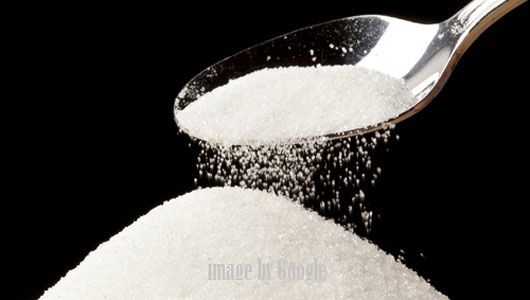
I don't buy that much sugar. Where does it all come from?
Most of the sugar we consume is hidden sugar. Here are some of the ways sugar slips into our diet:
- Soft drinks. We average about 54 gallons of soft drinks per person per year. This works out to approximately two sodas per day. One 12-ounce soda may contain 12 teaspoons of sugar.
- Desserts. A piece of chocolate cake, for instance, contains 15 teaspoons of sugar; a cup of frozen yogurt has 12 teaspoons.
- Ready-to-eat cereals. Some are excellent. But cereals like Fruit Loops and Sugar Smacks have 48 and 64 percent of their calories coming from sugar. This isn't cereal, it's candy!
You will also fins hidden sugars in foods such as canned soups, pot pies, TV dinners, and many brands of peanut butter.
Should I check labels for sugar?
Yes, but realize that sugar may also be hidden by giving it a different name. Sucrose, dextrose, lactose, fructose, and maltose for instance, are all sugars. So are corn syrup, honey and molasses. More than 100 substances that are called sugar exist.
Doesn't sugar produce quick energy?
Refined, concentrated sugars enter the bloodstream quickly. Up goes the blood sugar, resulting in a quick energy boost -- a sugar high.
But the high is only temporary because it triggers a surge of insulin. Insulin brings down blood sugar level and, in the absence of the moderating effects of fiber, sometimes pulls it down too fast and too far.
Try eating an apple, a banana, or a bowl of brown rice. The fiber in these foods slows down the absorption of sugar into the bloodstream. The sugar level won't jump around so much, your energy will stabilize, and you'll feel satisfied longer.
Recommended link: grabber from musicians friend
0 comments:
Post a Comment